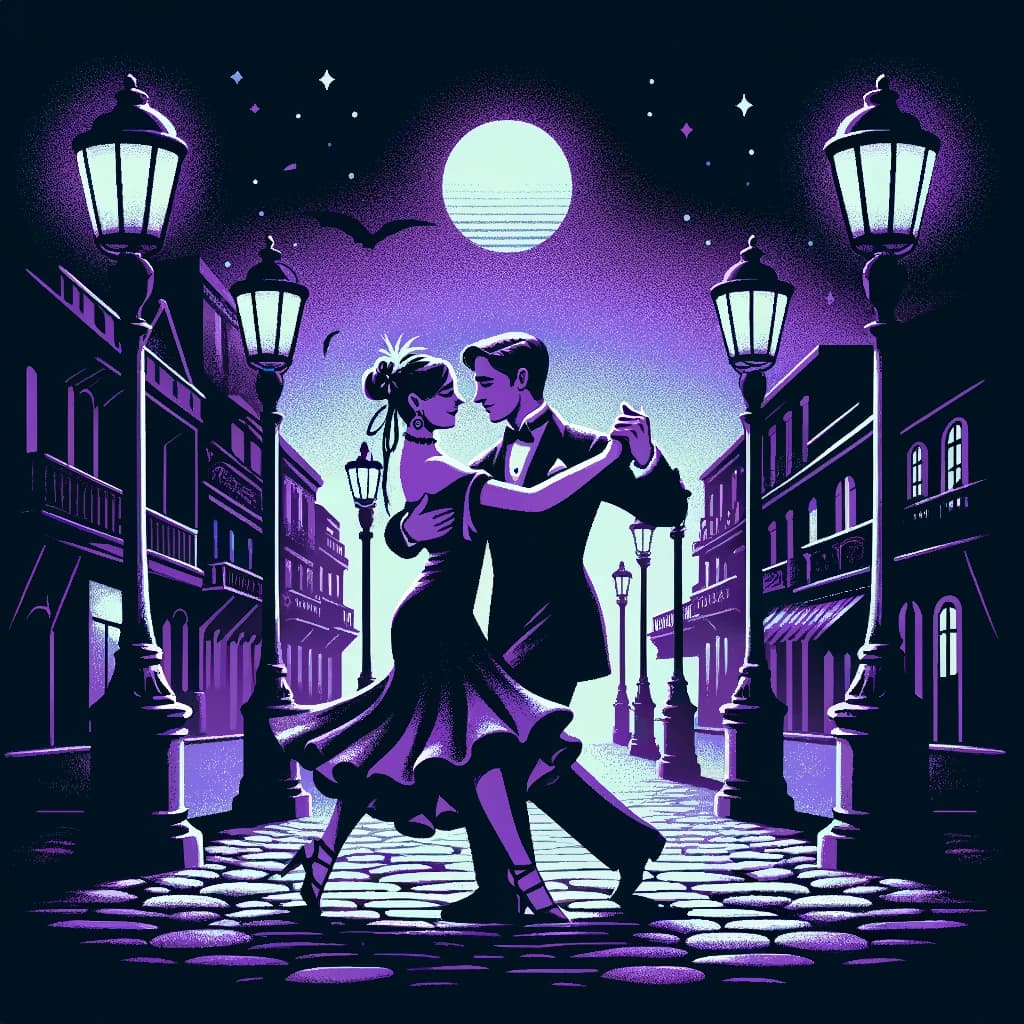Astor Pantaleón Piazzolla (Family name: Astor Pantaleón Piazzolla Manetti), was born on March 11, 1921, in Mar del Plata, Argentina, to Italian immigrant parents. His early years were spent in New York City, where his family moved in 1925. This diverse cultural environment played a crucial role in shaping his musical sensibilities. Piazzolla’s first encounter with the bandoneón, an instrument that would define his career, came at the age of eight when his father bought him one. Despite his initial reluctance, Piazzolla’s prodigious talent soon became evident.
Musical Education and Early Career
Piazzolla’s formative years were marked by rigorous musical training. He studied under several notable teachers, including the Hungarian classical pianist Bela Wilda, who introduced him to the works of Johann Sebastian Bach.
Piazzolla’s early compositions were marked by his participation in the evolutionary line of tango initiated by pioneers like Cobián, Bardi, Delfino, Arólas, and the De Caro brothers. His initial melodic tangos, such as “Se fue sin decirme adiós,” “Pigmalión,” and “El cielo en las manos,” alongside orchestral pieces like “El desbande,” “Villeguita,” and “Se armó,” showcased his burgeoning talent between 1945 and 1950. These works foreshadowed his later groundbreaking pieces that defined his unique style.
This early exposure to classical music had a lasting influence on Piazzolla’s compositional style. At the age of 17, Piazzolla returned to Argentina, where he began playing in Aníbal Troilo’s orchestra, one of the leading tango ensembles of the time. This experience provided him with invaluable insights into traditional tango music.
Evolution of Style
In the early 1950s, Piazzolla composed instrumental pieces like “Para lucirse,” “Prepárense,” “Contratiempo,” “Triunfal,” “Contrabajeando,” and “Lo que vendrá,” which marked the definitive emergence of his novel style. These compositions were characterized by long, linked phrases, vigorous and unexpected rhythmic themes, and traditional structural elements often contrasted between rhythmic and melodic sections. His notable compositions from this period include “Adiós, Nonino,” “Tango del ángel,” and “Verano porteño.”
Paris and the New Tango
A pivotal moment in Piazzolla’s career came in 1954 when he received a grant to study in Paris with the renowned composition teacher Nadia Boulanger. Boulanger’s encouragement to embrace his Argentine roots led Piazzolla to blend elements of jazz, classical music, and traditional tango, resulting in a revolutionary new style known as “nuevo tango.” This innovative approach, characterized by complex harmonies, counterpoint, and extended forms, initially met with resistance from traditionalists but eventually gained widespread acclaim.
Rise to Prominence
Upon returning to Argentina, Piazzolla formed several ensembles that became the primary vehicles for his new musical ideas. His Quinteto Nuevo Tango, established in 1960, is particularly notable for its groundbreaking performances and recordings. Works such as “Libertango” and “Adiós Nonino” exemplify Piazzolla’s unique ability to fuse the rhythmic intensity of tango with the sophistication of classical music.
The Arranger and Director
Piazzolla’s arranging and directing style was heavily influenced by figures from the De Caro school, such as Alfredo Gobbi, Orlando Goñi, and Osvaldo Pugliese. His arrangements displayed rhythmic complexity, emotional tension, and innovative instrumental combinations, incorporating elements from jazz and modern European music. Piazzolla’s orchestras, including his quintets and octets, featured diverse instrumentation such as string sections, harp, flutes, and electronic instruments, reflecting his quest for new sounds and textures.
Impact and Legacy
Astor Piazzolla’s contributions to tango music cannot be overstated. He transformed a genre that was once considered parochial into a respected form of art music, capable of expressing a wide range of emotions and ideas. His collaborations with artists across various genres, including jazz, classical, and popular music, further attest to his versatility and broad appeal. Piazzolla’s influence extends beyond his compositions; he also inspired a new generation of musicians to explore the possibilities of tango, ensuring its continued evolution.
Revolutionizing Tango: Piazzolla’s Unique Style
Astor Piazzolla’s music stands as a testament to his revolutionary approach to tango. Traditionally, tango music was characterized by its simple, yet passionate, melodies and rhythms, primarily played in dance halls and social gatherings. Piazzolla, however, envisioned a different future for tango. By blending elements of classical music, jazz, and traditional tango, he created a genre known as “nuevo tango” that broke away from conventional structures and infused the music with new life and complexity.
Innovative Compositional Techniques
Piazzolla’s compositions are marked by their sophisticated use of harmony, counterpoint, and form. Unlike traditional tango, which often relied on straightforward, repetitive structures, Piazzolla’s music features intricate harmonies and polyphonic textures, borrowing techniques from the Western classical tradition. His works frequently include sudden changes in tempo, dynamics, and mood, creating a dramatic and expressive musical narrative.
One of his signature techniques was the use of extended forms. While traditional tangos typically adhered to shorter, danceable forms, Piazzolla’s pieces often unfolded over several minutes, exploring a wide range of musical ideas and emotions. This approach allowed him to develop themes and motifs in ways that were previously unheard of in tango music.
Key Compositions
Among Piazzolla’s most famous compositions, “Libertango” stands out as a quintessential example of his nuevo tango style. Composed in 1974, “Libertango” is a bold declaration of musical freedom, blending the rhythmic drive of tango with the harmonic richness and improvisational elements of jazz.
“Adiós Nonino,” another iconic piece, is a deeply personal work dedicated to Piazzolla’s father. Written in 1959, it combines melancholic melodies with a complex harmonic structure, capturing the profound sense of loss and longing.
“Piazzolla’s “Four Seasons of Buenos Aires,” a series of compositions reflecting the changing seasons in his native city, showcases his ability to incorporate classical forms into tango. These pieces are often performed alongside Vivaldi’s “Four Seasons,” highlighting Piazzolla’s innovative fusion of tango and baroque music.
Musical Style and Influence
Piazzolla’s music is known for its intricate melodies, complex harmonies, and the innovative use of the bandoneón. His compositions often feature sudden shifts in tempo and dynamics, blending the rhythmic intensity of tango with elements of jazz and classical music. This blend has led to a unique genre that maintains the passionate essence of traditional tango while expanding its expressive possibilities.
Piazzolla’s work continues to influence musicians worldwide, bridging the gap between various musical traditions and ensuring that tango remains a vibrant and evolving art form.
His bandoneón playing, marked by rapid arpeggios, syncopated rhythms, and expressive phrasing, set a new standard for the instrument. His ensembles, often featuring unconventional instrumentation for tango (including electric guitar, flute, and percussion), expanded the sonic palette of the genre.
Piazzolla’s influence extends beyond the realm of tango. His collaborations with jazz musicians like Gerry Mulligan and his incorporation of classical elements have inspired a wide range of artists. His music has been performed by orchestras, chamber ensembles, and soloists worldwide, cementing his legacy as a composer who transcended genre boundaries.
Legacy and Continuing Impact
Astor Piazzolla’s legacy is one of innovation and transformation. He took a genre deeply rooted in Argentine culture and brought it to the global stage, demonstrating its potential as a form of art music. His compositions continue to be performed and recorded by musicians across the globe, and his influence is evident in the works of contemporary tango artists and composers.
Through his groundbreaking work, Piazzolla not only redefined tango but also expanded the possibilities of musical expression. His ability to synthesize diverse musical elements into a cohesive and compelling style has left an indelible mark on the world of music, ensuring that his contributions will be celebrated for generations to come.
Major Compositions by Astor Piazzolla
Astor Piazzolla’s musical catalog is vast and varied, reflecting his revolutionary approach to tango and his ability to blend different musical genres. Here is an overview of some of his most notable compositions:
1. Adiós Nonino
A deeply personal piece dedicated to his father, blending melancholy with sophisticated harmonic structures.
2. Libertango
One of his most famous works, representing his break from classical tango to his innovative “nuevo tango.”
3. Histoire du Tango
A suite for flute and guitar that traces the evolution of tango from its roots to contemporary forms.
4. Milonga del Ángel
Part of a series known as the “Angel” compositions, this piece showcases Piazzolla’s lyrical and emotive style.
5. Estaciones Porteñas (The Four Seasons of Buenos Aires)
These compositions reflect the seasons in Buenos Aires, often performed alongside Vivaldi’s “Four Seasons.”
6. La Camorra
A series of compositions characterized by their intense and dramatic themes.
7. Suite Punta del Este
Known for its complexity and integration of classical music forms with tango rhythms.
8. María de Buenos Aires
An opera-tango that combines music, poetry, and drama, illustrating Piazzolla’s innovative spirit.
9. Oblivion
A hauntingly beautiful piece often used in films and other media for its evocative melody.
10. Balada para un loco
A collaboration with poet Horacio Ferrer, blending spoken word with music in a unique tango form.
Notable Albums
- Tango: Zero Hour
- La Camorra: La Soledad de la Provocación Apasionada
- The Rough Dancer and the Cyclical Night (Tango Apasionado)
Later Years and Death
In the later years of his career, Piazzolla continued to compose and perform, despite health challenges. He suffered a stroke in 1990, which left him incapacitated until his death on July 4, 1992. Today, Piazzolla is celebrated as one of the most important composers of the 20th century. His music remains a vital part of the global cultural heritage, bridging the worlds of classical and popular music and continuing to inspire listeners and musicians alike.
Astor Piazzolla’s life and work exemplify the transformative power of music, demonstrating how cultural synthesis and innovation can lead to the creation of entirely new artistic forms.Astor Piazzolla’s contributions to tango music are unparalleled. His innovative compositions, arrangements, and performances have left an indelible mark on the genre, earning him recognition as a revolutionary artist. Through his work, Piazzolla elevated tango to new heights, blending tradition with innovation and ensuring its place in the world of contemporary music.













Responses (0 )